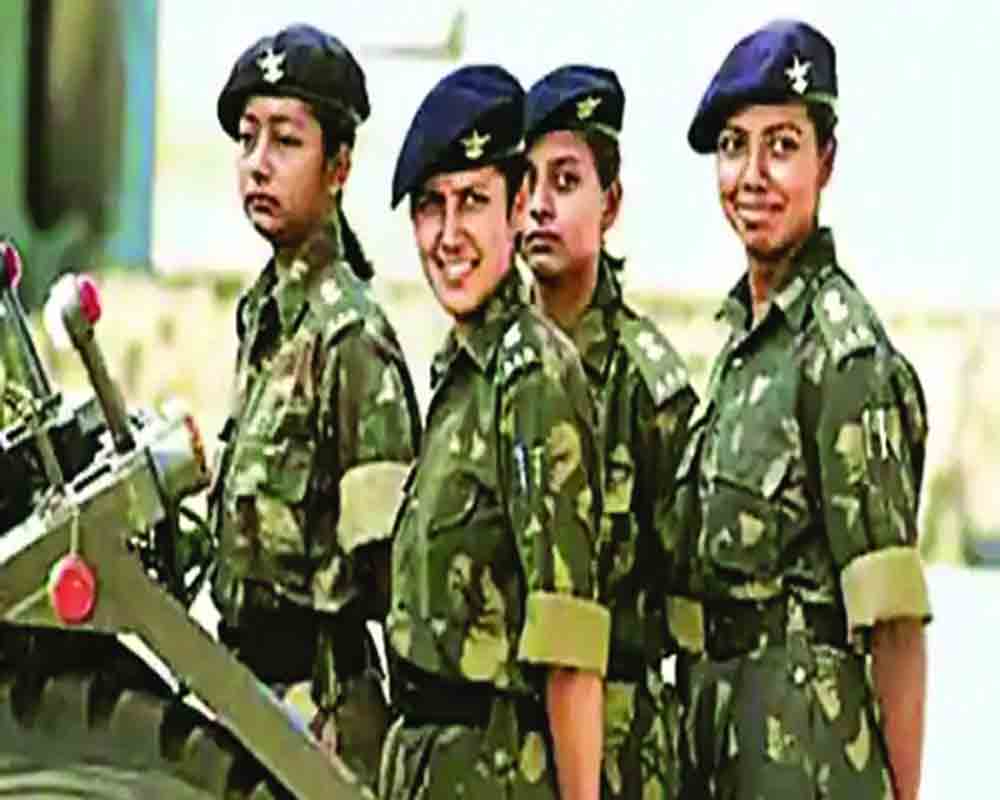There is no doubt that officers and other ranks have to undergo a sea change in their thinking process and attitude to accept gender equality
The recent Supreme Court judgement directing the Government to open the portals of the National Defence Academy for women has finally paved way for across-the-board gender equality in the armed Forces. Eligible women will now be permitted to appear for the NDA Entrance Examination for the first time and the sky will be the limit for their career aspirations. This will now enable women to join all available combat or non-combat branches of the three services.
Notwithstanding the above judgement, women have always had their presence in the armed forces, though in a limited role like that of doctors in all the three wings of the armed forces. It has, however, been almost three decades when women entered many other branches where only men dominated once.
The women officers in Indian armed forces have come a long way and have adapted well with the changing times. However, it is incumbent on the services to be accommodative in assimilating women in all domains — be it combat, administration, engineering or medical. Therefore, the onus is still upon the male-dominated armed forces to recognize the power of women officers and facilitate them to achieve their full potential.
I still fondly remember, whilst I was in command of INS Vikrant in 1992, when the first batch of women officers reported onboard for initial sea training for Short Service Commission in the Indian Navy. The lady officers were very enthusiastic and took keen interest in the training. Normally when officers join for sea training, they all live on the ship throughout their training. In this case as there were no separate arrangements onboard for their stay, the ship was in harbour and they would come in the morning and leave in the evening. Throughout their training they exhibited their skill levels, adaptability, physical fitness and mental alertness to match with standards laid down for men.
These young lady officers were quick on the uptake and always enthusiastic to learn the service ways. They were happy with the training but had one observation — why they could not stay onboard. It was explained to them that as of now the arrangements onboard ships are for men, especially living spaces and washrooms. Whilst they all understood the existing constraints, they were keen to know when ships will have women’s quarters as well. I recollect my reaction to that was ‘when a child is born, he/she first learns to crawl, then stand and only thereafter runs’. I can only say that the time has come for all of them to run.
On the lighter side, many of those young lady officers found their soul mates amongst the naval officers during their initial service career and thereafter, lived happily ever after. Being from the same service the understanding between the partners also proved to be of higher quality, essential for marital harmony. In short it is a win in situation, as both the partners know each other’s service conditions and do not take long to settle.
I can only say that the day has come when the idea of women joining armed forces had taken shape and has now evolved to women getting permanent commission and entering areas dominated by men like fighter pilots, combat units and serving onboard ships and sailing on operational missions.
There’s is no doubt that officers and other ranks have also to undergo a sea change in their thinking process and attitude so as to accept gender equality and when required, take orders from women officers in command. Having said that, women must also remember that they are getting into new fields and must tread with caution and never hesitate to take guidance from men who have been holding the fort for a much longer period.
By the way in the US Navy, for the first time, a woman officer has recently been appointed to command a nuclear-powered aircraft carrier. I have no doubt it is only a matter of time when we will have lady officers in command of combat units and move shoulder to shoulder with their male counterparts.
Indian history is replete with examples of women in command of combat troops, like "Rani of Jhansi" and many others who have led troops in battle and given a befitting reply to the enemy. It was only somewhere along the time when we lost the plot and armed forces became the forte of men alone.
At the end, I can only say, ‘Welcome to Indian armed forces, brave Ladies, you are indeed the pride of India’.
(The writer, a retired Rear Admiral, is Group Pro Vice Chancellor & OSD (HR), Amity University, Uttar Pradesh. The views expressed are personal.)


























